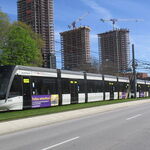jje1000
Senior Member
Yikes. Better oversight is needed.
https://www.thestar.com/news/queens...ny-of-government-snafus-in-annual-report.html
Ontario auditor general exposes litany of government snafus in annual report
[...]
The GTA’s regional transit agency Metrolinx has gone off the rails when it comes to properly completing projects on time and on budget, Lysyk said, citing a litany of problems including lax oversight of work that cost taxpayers “significant amounts.”
She highlighted a pedestrian bridge over 14 lanes of Highway 401 to the GO station at Pickering, in which an unnamed contractor made mistakes such as installing a bridge truss upside down, but was hired back for Phase 2 of the project and was eventually fired after continued “poor performance” that included careless welding that will take $1 million to fix.
And yet the company, which was paid fully for the first contract and 99 per cent of the value of the second contract, was hired for another $39 million project.
“Metrolinx does not have a process in place to identify poorly performing contractors when it is making the decision to award contracts,” Lysyk said, noting the Pickering bridge contractor had “no experience” installing trusses.
“Thus, contractors can take advantage of this and continue to perform poorly without repercussions.”
Metrolinx, which operates GO Transit, also “rarely takes action” against contractors for missing deadlines, resulting in budget overruns, the audit concluded.
Lysyk cited an example where errors by design consultants in a random sample of six projects cost taxpayers an extra $22.5 million, and another case where projects such as the Pickering GO parking garage and Burlington GO station building completed up to 25 months behind schedule cost $2 million for consultants to shepherd them to completion.
The audit also found Metrolinx “does not know that it is getting what it pays for” in rail contracts with CN and CP, with CN’s construction charges up to 130 per cent higher than a competitor’s and no questions asked by the transit agency.
On one project, Metrolinx paid for new parts in railway construction and got used ones instead.
“It does not check to ensure that parts are new,” said Lysyk.
[...]
https://www.thestar.com/news/queens...ny-of-government-snafus-in-annual-report.html





